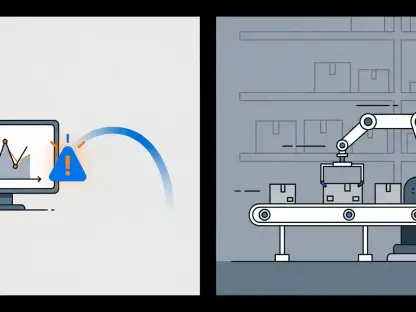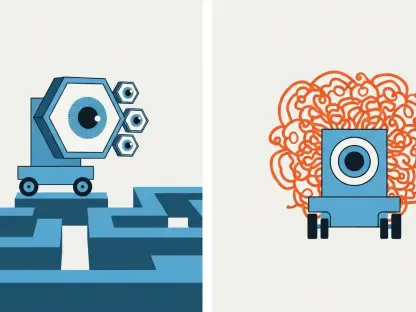Imagine a scenario where a devastating diagnosis of pancreatic cancer, one of the most aggressive forms of malignancy, could be met with a powerful tool that predicts the likelihood of liver metastasis—a complication that drastically worsens patient outcomes and poses significant challenges to treatment. This is no longer just a vision but a tangible reality thanks to advancements in automated machine learning, commonly referred to as AutoML. Recent research has unveiled the remarkable potential of these technologies to transform precision oncology by enabling early detection and personalized treatment plans. By analyzing vast datasets, AutoML offers a lifeline to clinicians striving to improve survival rates for patients facing this formidable disease. The ability to foresee such critical developments as liver metastasis allows for timely interventions that could alter the course of treatment. This groundbreaking approach marks a significant shift in how medical professionals tackle the challenges posed by complex cancers, paving the way for more tailored and effective strategies in patient care.
Harnessing Data for Precision Predictions
The foundation of this transformative technology lies in the meticulous analysis of extensive patient data to build robust predictive models. A comprehensive study involving over 15,000 pancreatic cancer patients utilized information from a well-established database to create distinct training, validation, and testing groups. These datasets, carefully balanced to reflect a consistent incidence of liver metastasis ranging between 17.0% and 17.6%, provided a solid base for developing reliable tools. Two approaches were employed: the traditional Least Absolute Shrinkage and Selection Operator combined with logistic regression, and the more cutting-edge AutoML techniques. Additionally, a nomogram derived from multivariate logistic regression was crafted to visually represent risk factors, aiding clinicians in making informed decisions. This structured methodology underscores the importance of leveraging large-scale data to enhance the accuracy of predictions, offering a glimpse into how technology can refine the diagnostic process for better patient management.
Beyond the data collection and model-building process, the real strength of AutoML emerges in its ability to adapt and refine predictions with remarkable precision. Unlike conventional statistical methods that often require manual feature selection and can falter with intricate datasets, AutoML automates critical tasks such as model selection and hyperparameter tuning. This automation results in models that are not only more efficient but also capable of capturing subtle patterns associated with liver metastasis in pancreatic cancer patients. The study highlighted the use of interpretability tools like SHapley Additive exPlanation (SHAP) plots and Local Interpretable Model-Agnostic Explanation (LIME) to clarify how predictions are made. Such transparency is vital for building trust among healthcare providers, ensuring that these advanced tools are seen as reliable allies in clinical settings. The seamless integration of data-driven insights with practical application sets AutoML apart as a game-changer in oncology.
Superior Performance of AutoML Models
Delving into the outcomes of this research, the performance of AutoML models, particularly the Gradient Boosting Machine (GBM) algorithm, stands out as a significant achievement. The GBM model demonstrated exceptional discriminatory power, achieving high scores on the area under the receiver operating characteristic (ROC) curves across all datasets—0.908 in training, 0.885 in validation, and 0.892 in testing. These figures reflect a level of accuracy and reliability that surpasses traditional logistic regression approaches, positioning AutoML as a superior choice for predicting liver metastasis. Further validation through calibration curves and decision curve analysis confirmed the practical utility of these models in real-world clinical environments. The ability to accurately identify patients at high risk of metastasis offers a critical advantage, enabling medical professionals to prioritize interventions that could potentially save lives.
Another key aspect of this advancement is the clinical applicability of AutoML-driven predictions in enhancing patient outcomes. The capacity to handle large and complex datasets allows these models to uncover nuanced risk factors that might be overlooked by conventional methods. This depth of analysis supports early identification of at-risk individuals, facilitating the design of personalized treatment plans tailored to specific patient profiles. The research advocates for the broader adoption of such AI-driven tools, emphasizing their potential to revolutionize how clinicians approach risk stratification in pancreatic cancer care. By providing a clearer understanding of metastasis likelihood, AutoML empowers healthcare teams to act proactively, mitigating progression through timely and targeted strategies. This shift toward precision medicine highlights the transformative impact of technology on modern healthcare practices.
Paving the Way for Future Innovations
Reflecting on the strides made, the research underscored a compelling case for integrating AutoML into the management of pancreatic cancer complications. The standout performance of the GBM model, coupled with its focus on interpretability, established it as an invaluable asset in the realm of precision medicine. This work contributed significantly to the growing body of evidence supporting AI applications in healthcare, setting a robust precedent for tackling other cancer-related challenges through automated predictive tools.
Looking ahead, the insights gained from this study laid a strong foundation for future explorations into AI-driven solutions. Continued efforts to refine these models and expand their application across various malignancies were prioritized. The emphasis on detailed evaluation metrics and clinical relevance ensured that past findings remained both scientifically sound and practically actionable. As the medical field moves forward, adopting such innovative tools promises to enhance data-driven decision-making, ultimately improving patient prognosis through more precise and personalized care approaches.









